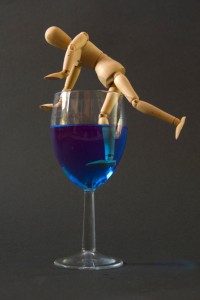 Models of Alcoholism and Drug Addiction: Part Two
Models of Alcoholism and Drug Addiction: Part Two
We’ve talked about how difficult it is to come up with a single effective approach to addictions, and that’s exemplified by the various models that exist. By examining the models through which people view addiction, it’s possible to gain better perspective on society’s reaction to a phenomenon that after all has been around for thousands of years.
I think most people naturally assume that medical professionals view addiction as a disease, but that’s not always true. In fact, many do not.
Clinical medicine focuses on acute illness — the need to relieve the most severe presenting problems. In most cases, that translates to short-term care. For heart disease, it can mean stabilizing blood pressure, or emergency intervention in case of a heart attack. With diabetes, it means getting blood sugar back within normal limits. For addictions, acute care usually translates to safe detoxification.
We tend to think of detox as not all that dangerous, but that’s because treatment is much, much better than it once was. The stress of severe withdrawal can precipitate a significant health crisis in a vulnerable patient. Seizures and delirium were once common, and untreated alcohol withdrawal can be fatal. It hardly ever is, but again, that’s because of improved treatment.
Unfortunately, like heart disease and diabetes, alcoholism and drug addiction are not acute illnesses. They’re chronic. The problem doesn’t go away when the crisis ends. A successfully detoxified patient can be back in the emergency room a few months later, in even worse shape. In hospital terms, they’re classic ‘frequent flyers’.
Hospital staff find this discouraging. After all, they see mostly failure. The ‘successes’ in recovery mysteriously stop showing up in the ER. Doctors and nurses struggle to explain the recidivism. They’re likely to characterize addiction as ‘self-induced’ and a sign that the alcoholic lacks concern for his health, or for the welfare of loved ones.
Addicts and alcoholics, who may be in considerable denial, seek medical care in order to feel better, not to initiate lasting recovery. They can be quite defensive, even hostile, towards well-meaning suggestions for change. After a few vain attempts, a healthcare professional may simply give up — providing care when necessary, but really, just as happy to see the patient leave. “What’s the use of trying?” they ask. “It doesn’t work.”
This combination of patient resistance and staff futility can turn treatment into a revolving door. It’s such a common problem that the Federal government has promoted a nationwide effort to put an end to it — called SBIRT (Screening, Brief Intervention, and Referral to Treatment). It’s designed to interrupt the cycle of repeat admissions. IRETA has some helpful resources, and we discuss SBIRT in more detail in our “Intervention in the ER” articles.
However necessary — and it is necessary — good acute care will never be enough to solve the problem of addictions. It’s a bit like adding oil to your engine every week without bothering to fix the leaky gasket.
It’s our good fortune that over the decades another approach developed, based on the notion that addiction was a chronic disease.
This article is Part One in a series “Models of Alcoholism and Drug Addiction.” Further articles will explore other models.
Models of Alcoholism and Drug Addiction -More from this series:
- Models of Alcoholism and Drug Addiction
- Models of Addiction: The Medical Model
- Models of Addiction: The Psychoanalytic Model
- Models of Addiction: The Temperance Model
- Models of Addiction: The Moderation Model








